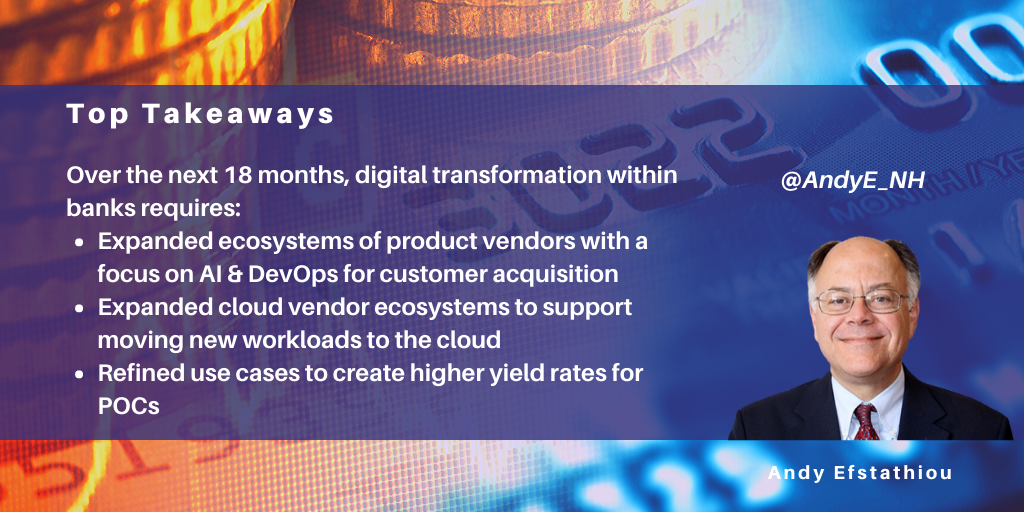posted on Feb 03, 2020 by Andy Efstathiou

Banks have been aggressively transforming their operations to a digital delivery model. It is well known that a key driver, across all industries, is the need to attract new, primarily young, customers who prefer omnichannel interaction with vendors and demand high-quality CX in their business interactions. Less well known are two key drivers that make speedy transformation imperative. They include:
- Open banking regulations: they are driving changes to the business model. A successful transition requires operational agility, efficiency, and accuracy to enable emerging models and openness to allow external participants
- Price compression: the need to increase revenues to offset price compression requires improved sales/marketing campaigns with analytics, improved coordination across silos, and faster time to market for new banking products.
Regulations and price compression are making transformation an urgent need. However, the back-end structure of banks, monolithic 30+ year-old legacy platforms, present transformation challenges. Key challenges include:
- Digital technologies: emerging vendor landscape requires significant ongoing due diligence efforts
- Accessing emerging technological capabilities requires deciding when to partner, use open source, acquire, or share products
- Cybersecurity: increasing use of cloud, shared, and open environments increase vulnerability to cyber threats
- Open banking requires the ability to adopt new digital business models, both in services delivered and internally delivered ops
- Standardizing process execution: Agility to adapt standardized execution to new processes, ending obsolete processes and standing up new processes. Agility is created from the successful assembly of software modules as required
- Cloud/PaaS/systems integration/consolidation: Banks need to standardize platforms to drive STP. Banks have limited internal staff, requiring third-party support for new platforms and operational delivery.
To address these challenges, services vendors have focused on professional services for on-premises platforms for large banks and cloud-delivered platforms for startup and regional banks. Increasingly large banks are looking for hybrid cloud-delivered platforms and modules. Digital technologies have reduced the effectiveness of labor arbitrage strategies. Vendors are aggressively automating their own delivery to remain relevant. Cloud-delivered DevOps is increasingly in demand by all clients. Banks want support for analyzing transactions and entities (customers and counterparties) to drive greater analytic insight and capability development.
Over the next eighteen months, services vendors will:
- Expand and deepen their ecosystems of FinTech product vendors with a focus on AI and DevOps for customer acquisition
- Expand their cloud vendor ecosystems to support moving new workloads to the cloud
- Expand their API libraries to support new markets and the integration of banks’ vendors into their digital operations
- Enhance their tools’ ability to make predictive analyses, not just descriptive analyses
- Connect front-end customer engagement to back-end processing, enabling STP and rapid fulfillment
- Refine their use cases to create higher yield rates for POCs (an increase from the current rate of <60%).
Banks we have spoken with are accelerating their plans to move to digital operations, both transforming their legacy operations and starting new digital initiatives. Many “all-digital” startups at established banks have shut down as the initial use cases failed to meet their goals. The common underlying reason for failure is that digital banks do not run themselves; they require ongoing investment and attention in order to succeed. Similarly, cloud operations do not reduce the cost of delivery in the long run. Cloud operations increase flexibility, which allows banks to enter and exit markets and products with minimal cost to the business. Banks with a clear roadmap and determination to go all-in on digital will have the best chance at creating a successful digital business.
